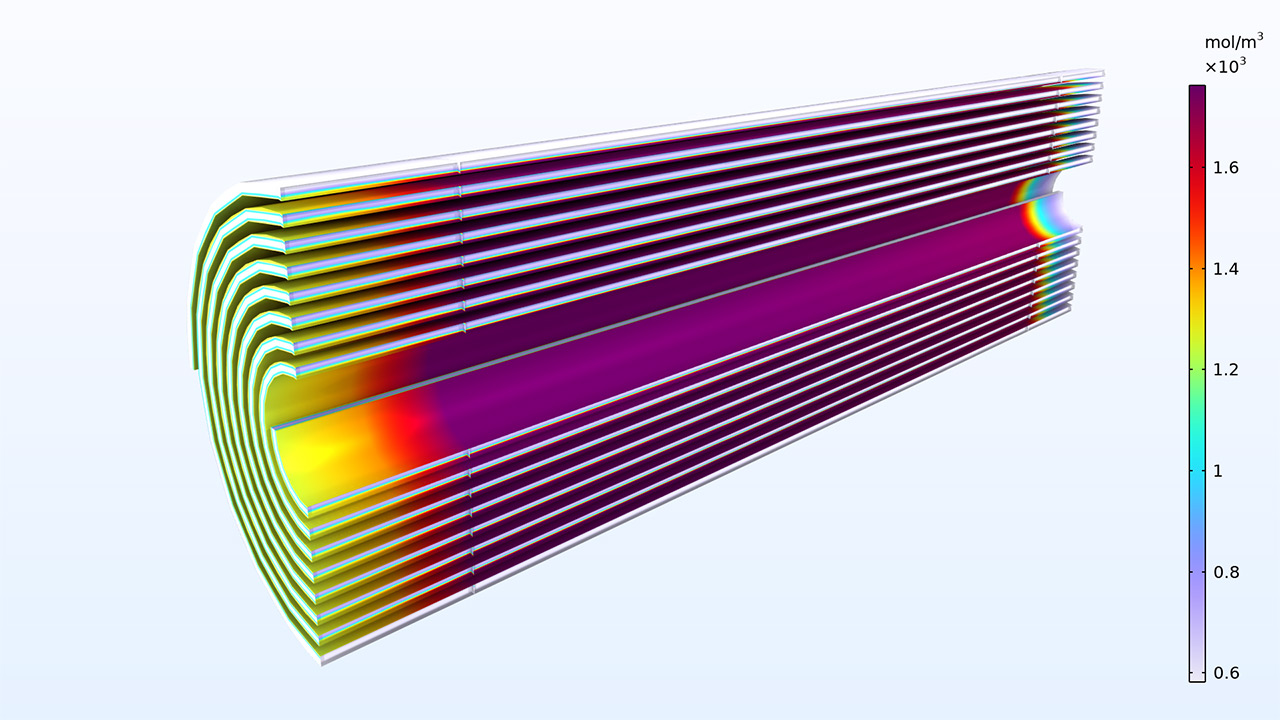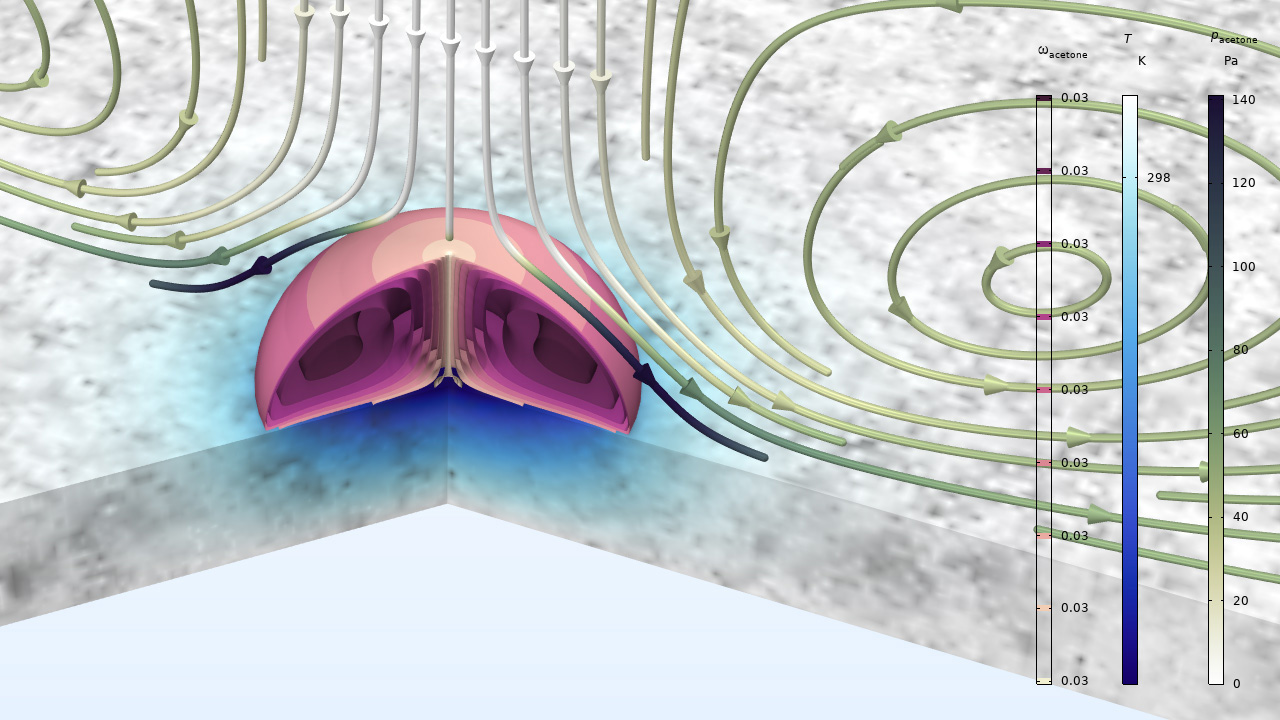Chemical Reaction Engineering Module Updates
For users of the Chemical Reaction Engineering Module, COMSOL Multiphysics® version 6.4 introduces support for reacting flows with large eddy simulation (LES), particle aggregation and breakage modeling, and a new feature for continuous operation with solid-phase consumption and bed replenishment. Learn more about these updates below.
Large Eddy Simulation (LES) for Reacting Flow
The Reacting Flow feature now supports LES and brings unprecedented accuracy to the modeling of turbulent reacting systems. By coupling LES with the Chemistry, Chemical Species Transport, and Heat Transfer in Fluids interfaces, you can capture the detailed interplay of mixing, heat transfer, and chemical reactions in gases and liquids. The approach accounts for heat of reaction, enthalpy diffusion, and mass fluxes, while residual-based LES modeling enhances predictions of heat and mass transport. With temperature-dependent fluid and chemical properties included, this functionality provides highly realistic insights into concentration, reaction rate, and temperature fields. Whether you are studying catalytic reactors or complex mixing processes, LES-based reacting flow models help reveal critical details that traditional turbulence models may miss. Note that the LES functionality requires the CFD Module.

Particle Aggregation and Breakage
From pharmaceutical manufacturing to advanced materials processing, accurately modeling particle growth, morphology, and breakage is important for process optimization. The new support for particle aggregation and breakage enables realistic simulation of evolving particle-size distributions in crystallization, precipitation, and granulation processes. This functionality is implemented in the Precipitation and Crystallization interface, which now solves the Smoluchowski coagulation equation together with a fragmentation equation to provide a rigorous description of particle dynamics.
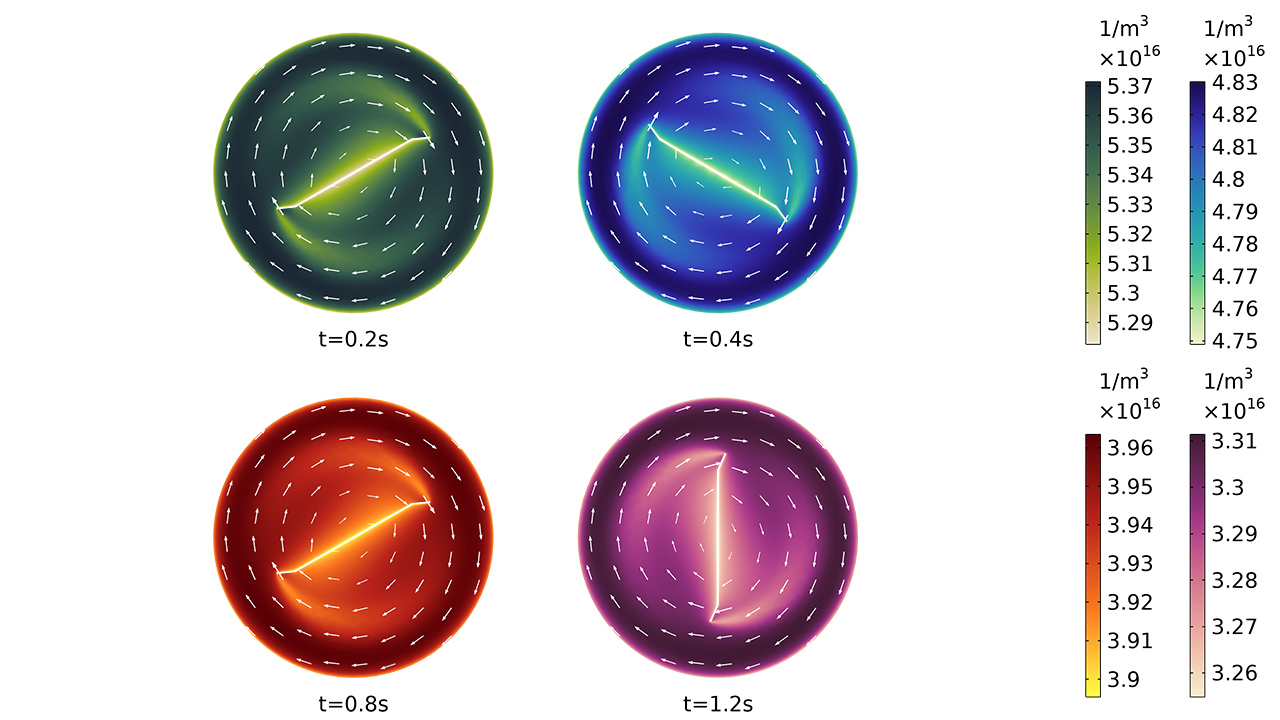
Moving-Bed Reactor Feature
A new moving-bed reactor feature makes it possible to model heterogeneous reactors where the solid phase is continuously consumed and replenished. This feature enables detailed studies of processes in which bed movement strongly influences reactor performance, such as catalytic cracking, gas–solid reactions, and biomass conversion. The feature accounts for the dynamic behavior of the solid phase during continuous operation, making it a powerful option for analyzing efficiency, selectivity, and operating conditions in industrial-scale processes.
Periodic Condition
A new Periodic Condition feature has been added to the Darcy's Law and Richards' Equation interfaces to easily enforce periodicity for the flow between two or more boundaries. In addition, it is possible to create a pressure difference between source and destination boundaries, either by specifying the pressure jump directly or by prescribing a mass flow. The periodic condition is typically used to model representative volume elements and compute effective properties for use in homogenized porous media.
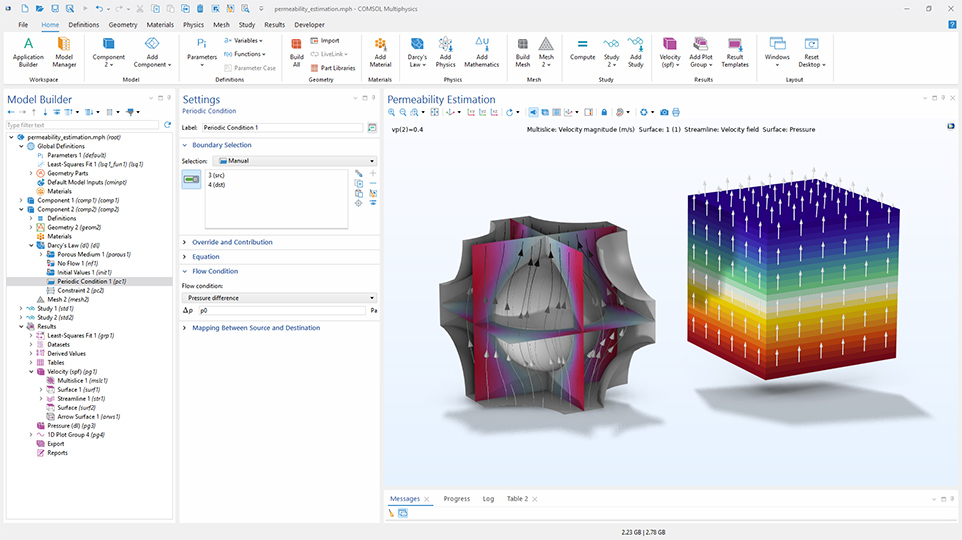
Pressure Jump Option for the Free and Porous Media Flow Coupling
The Free and Porous Media Flow Coupling has a new option to include a pressure jump across the free–porous boundary. This makes it possible to model, as examples, the osmotic pressure at a semipermeable membrane supported by a porous spacer material or a pressure jump due to capillary pressure in the case of multiphase flow.
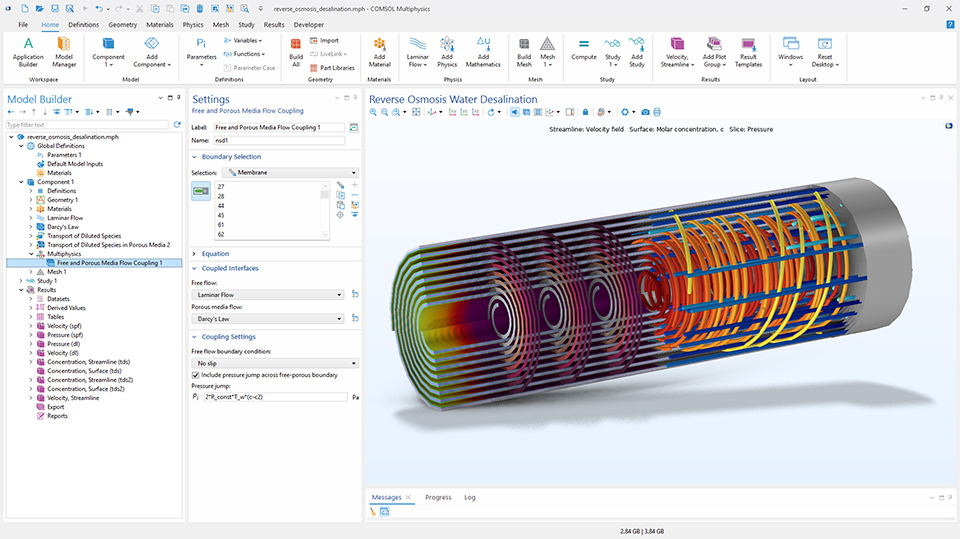
New and Updated Tutorial Models
COMSOL Multiphysics® version 6.4 brings several new and updated tutorial models to the Chemical Reaction Engineering Module.
Production of Antibody–Drug Conjugates in a Stirred Tank Reactor
Simulation of turbulent reacting flow in a tank reactor with a four-blade stirrer. Isosurfaces and contours of the conjugated antibody concentration provide valuable insight into mixing efficiency and reaction performance.
Chemical Vapor Deposition of Titanium Nitride on Machining Tool Inserts
Turbulent Aggregation of Nanoparticles
Charging of a Metal Hydride Tank
Convective Evaporation of a Water–Acetone Droplet
Reverse Osmosis Water Desalination
